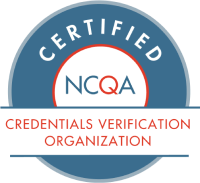While other industries — and the patient-side of healthcare — have benefited from a boon in technology-based solutions, the business-side of healthcare has not yet reached its potential. As a manual-task driven function, credentialing has its own set of challenges that could greatly benefit from smart technology. Let’s zoom into specific pieces of the overall credentialing process and look at some simple opportunities to increase efficiency for both your credentialing team and also your review committee.
How much time and productivity are you losing to committee prep?
Many credentialing teams — whether performing primary source verification in-house or outsourcing to a traditional CVO — follow the same manual, paper-heavy process to prepare for committee review. They begin by compiling piles of files and/or excel spreadsheets in order sort through each provider file in preparation for committee review. This manual process takes hours or even days.
We’ve seen the most-effective teams sort providers into the following categories:
- Clean files: Providers without any alerts
- Expired licenses
- DEA alerts
- Malpractice limits by provider type
- Some of our clients have determined that there isn’t a benefit to reviewing a malpractice case from 20 years ago every time a provider goes to committee so they’ve adjusted their bylaws to save committee time. They’ll only review providers who meet a certain amount of malpractice totals over a specific time period by provider type. For example, they’ll review OBGYNs who’ve had more than $1M in cases over the last 5 years.
- Malpractice limits by timeframe
- Some plans have bylaws that, for instance, send providers with malpractice of less than $1M and more than 10 years ago to go straight to bulk approval.
- Initial credential vs. recredential: Your committee has a fixed amount of time they can meet. It might make sense to prioritize files that help you meet any open enrollment or CMS deadlines.
Go further and save your team prep time. The right credentialing technology offers built-in sorting and reporting tools, removing any manual sorting process you may be used to, whether with paper files or spreadsheets. This also allows you to sort your provider information in the way that works best for your committee.
[cta id=ec2]
How can you streamline your committee review meetings?
Saving committee prep time and improving your committee’s chances of getting through all the providers scheduled for review may start with your bylaws. Do your bylaws allow your medical director to bulk approve providers who meet specific thresholds? Doing so will save your committee a ton of time while also ensuring a high-quality network because your committee can focus their time on thoroughly reviewing the providers with alerts or issues.
Your committee is very expensive. It makes sense to maximize the time they have together and reduce the amount of work they need to do. Changing a few bylaws might help achieve this goal, as will the right credentialing tools that allow digital (and remote) review as well as easy provider sorting.
If your files are paper-based, everyone on your credentialing committee needs to be together to review them. Setting up this meeting can be an expensive, complex process, as it requires coordinating the schedules of some senior employees while taking them away from their primary responsibilities.
If your provider files are centralized using a secure online platform, your committee doesn’t need to travel to meet in person. Instead, a less-expensive and time-saving conference call works. Costs decrease significantly if your reviews can occur remotely and your committee members can review and comment on files at their respective locations.
Eliminating time-consuming manual tasks, where possible, can decrease risk and improve quality
By moving to a cloud-based credentialing platform, you can simplify the review process, decrease the costs associated with credentialing review and remain NCQA-compliant.
- Provider data is more easily accessible. It’s no longer unsearchable and hard to dig through.
- Committee prep goes from several days to less than 30 minutes.
- Compliance becomes easier. Because you’ve streamlined the process, your committee can review more files during their allotted time, which means you won’t have to push as many — or any — providers to the next committee and you’ll remain in compliance. You’ll also want a tool that allows you to record committee decisions directly in the provider profile, creating an auditable record, for the defensible backup you require.
Utilize a smart credentialing platform to remove bottlenecks that result from manual work, which can lead to bad decisions, poor provider relations and added expenses. Doing so will transform your review process into a fast, accurate, cost-effective, compliant process with much fewer headaches.
Interested in streamlining committee prep and review, as well as your overall credentialing process? Set up a 15-minute call.



